Even as he grows older, Microsoft founder Bill Gates still fondly remembers the catalytic computer code he wrote 50 years ago that opened up a new frontier in technology.
Although the code that Gates printed out on a teletype machine may look crude compared to what’s powering today’s artificial intelligence platforms, it played a critical role in creating Microsoft in April 1975 — a golden anniversary that the Redmond, Washington, company celebrated on April 4.
Gates, 69, set the stage for that jubilee with a blog post reminiscing on how he and his old high school friend — the late Paul Allen — scrambled to create the world’s first “software factory” after reading an article in the January 1975 issue of Popular Electronics magazine about the Altair 8800, a minicomputer that would be powered by a tiny chip made by the then-obscure technology company, Intel.
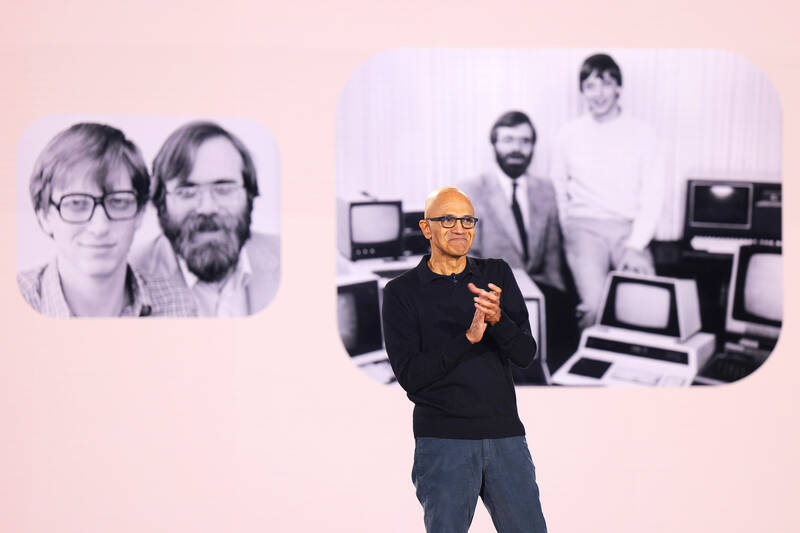
Photo: AP 照片:美聯社
The article inspired Gates, who was just a freshman at Harvard University, and Allen to call Altair’s maker, Micro Instrumentation and Telemetry Systems, and promise the company’s CEO Ed Roberts they had developed software that would enable consumers to control the hardware. There was just one hitch: Gates and Allen hadn’t yet come up with the code they promised Roberts.
Gates and Allen tackled the challenge by latching onto the BASIC computer language that had been developed in 1964 at Dartmouth College, but they still had to figure out a way to make the technology compatible with the forthcoming Altair computer, even though they didn’t even have a prototype of the machine.
After spending two months working on the program with little sleep, Gates finished the code that became the basis for the Altair’s first operating system. “That code remains the coolest I’ve ever written,” Gates wrote in his blog post, which includes an option to download the original program.
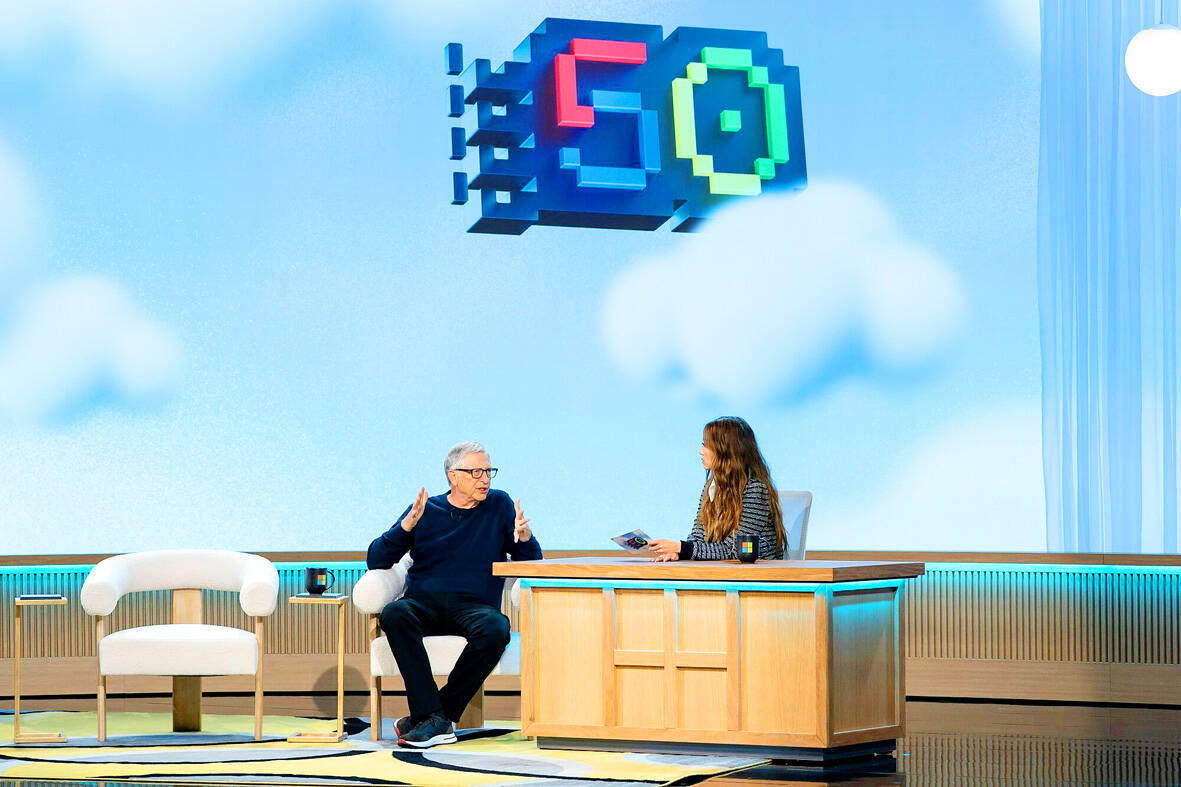
Photo: Bloomberg 照片:彭博社
The code would go on to provide the foundation for a business that would make personal computers a household staple, with a suite of software that include the Word, Excel and PowerPoint programs, as well as the Windows operating system that still powers most PCs today.
“That was the revolution,” Gates said of the code in a video accompanying his post. “That was the thing that ushered in personal computing.”
Gates’ recollection of the code is part of a nostalgic kick that he has been on this year as he prepares to turn 70 in October.
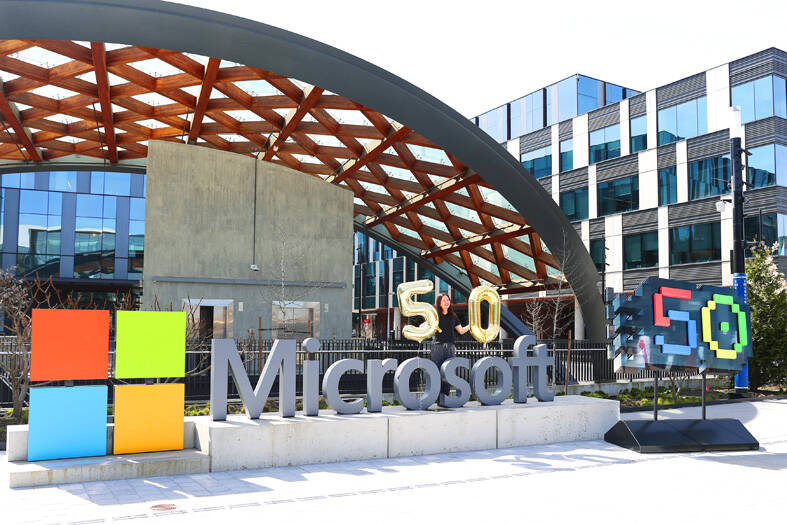
Photo: AP 照片:美聯社
The trip down memory lane included the February release of a memoir exploring his early years as an often-misunderstood child with few friends, and a hailing of the 25th anniversary of the philanthropic foundation he created after stepping down as Microsoft’s CEO in 2000. The tech giant initially stumbled after Gates’ departure but has been thriving under CEO Satya Nadella, and has amassed a market value of about US$2.8 trillion.
In his memoir, Gates also reflected on his tempestuous relationship with fellow PC pioneer, the late Apple co-founder Steve Jobs, whose company will be celebrating its golden anniversary next year.
“Fifty years is a long time,” said Gates, whose personal fortune is estimated at US$108 billion. “It’s crazy that the dream came true.” (AP)
即便年紀已長,微軟創辦人比爾蓋茲仍深深記得他50年前寫的那個關鍵電腦程式碼,它開闢了科技的新領域。
與現今人工智慧平台所用的程式碼相比,蓋茲以電傳打字機列印出來的程式碼即便看來可能有些簡陋,但它在1975年4月微軟創立的過程中扮演了關鍵的角色——位於美國華盛頓州雷德蒙德的微軟公司,4月4日慶祝成立50週年。
現年69歲的蓋茲,其部落格一篇文章為這次週年慶揭開序幕,他回憶與高中老友——已故的保羅.艾倫,在1975年1月的《大眾電子》(Popular Electronics)雜誌上讀到一篇關於Altair 8800的文章後,開始努力創建世界上第一家「軟體工廠」。Altair 8800是一款微型電腦,使用當時名不見經傳的科技公司英特爾所生產的微處理器。
這篇文章啟發了當時還是哈佛大學大一學生的蓋茲和艾倫,他們打電話給Altair的製造商微儀系統家用電子公司(Micro Instrumentation and Telemetry Systems, MITS),並向該公司執行長艾德.羅伯茨保證,他們已開發出可讓消費者控制硬體的軟體。但唯一的問題是:蓋茲和艾倫還沒寫出那個程式。
蓋茲和艾倫運用BASIC電腦語言來面對這挑戰,BASIC是達特茅斯學院在1964年所開發出來的。但他們仍需要找到一種方法使該技術與即將推出的Altair電腦相容,儘管他們連這電腦的原型都沒有。
經過兩個月的不眠不休,蓋茲完成了這個程式,那是Altair第一個作業系統的基礎。他在部落格中寫道:「那是我寫過的最酷的程式碼」,文內還提供該原始程式的下載。
該程式碼奠定了一家公司的基礎,這公司使個人電腦成為家庭必需品,其軟體套件包括Word、Excel及PowerPoint等程式,以及至今仍在大多數個人電腦上運作的Windows作業系統。
蓋茲在貼文附加的影片中談及該程式碼,說道:「它就是革命」。「這就是個人電腦的開端」。
今年的蓋茲很懷舊,因為他將在10月過70歲生日,對該程式碼的回顧也是出於這懷舊。
蓋茲這趟回憶之旅包括2月出版的回憶錄,講述他早年是常被誤解、朋友很少的孩子,以及慶祝他在2000年卸任微軟執行長後創立的慈善基金會成立25週年。微軟這科技巨頭在蓋茲卸任後一開始步履蹣跚,但後來在執行長薩蒂亞.納德拉的領導下蓬勃發展,目前市值已達約2.8兆美元。
蓋茲在回憶錄中也回顧了他與另一位個人電腦先驅、已故蘋果共同創辦人史蒂夫.賈伯斯之間跌宕起伏的關係,賈伯斯的公司明年將慶祝成立50週年。
「50年是很長的一段時間」,蓋茲說道,他的個人財富估計為1,080億美元。「夢想成真了,這真是太瘋狂了」。
(台北時報林俐凱編譯)
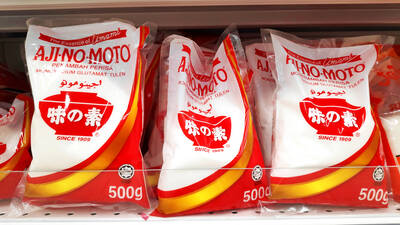
Monosodium glutamate (MSG) has been used in cooking for over a century to enhance flavor. It is often found in Chinese dishes and many other cuisines. Despite its common use, many people misunderstand the safety of MSG. The bad __1__ of MSG started in the late 1960s, when a letter to the New England Journal of Medicine described symptoms like a racing heart, weakness, and numbness after the writer ate Northern Chinese food. While no specific cause was __2__, a series of questionable studies in 1968 began to point the finger at MSG. In one such study, neurologist Herbert Schaumburg and
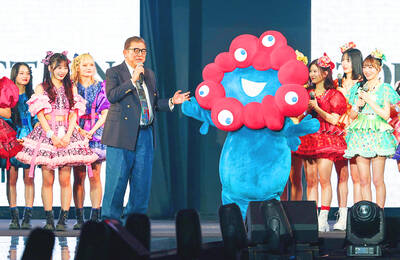
A: The World Expo 2025 is set to open in Osaka, Japan, on Sunday, with 158 countries and regions and nine international organizations participating in the event. B: Wow, what’s the theme this time? A: The theme is “Designing Future Society for Our Lives.” B: Do you want to go? How long will it last? A: It’ll run for 184 days, until Oct. 13. Maybe we can go to Osaka during summer vacation. A: 2025年世界博覽會預計週日將在日本大阪開幕,158個國家或地區及9大國際組織將參與盛會! B: 哇這次的主題是什麼? A: 主題是:「創造閃耀生命光輝的未來社會」。 B: 你想要去嗎?展出多久啊? A: 世博會共展出184天到10月13日,或許我們暑假時可以去大阪玩。 (By Eddy Chang, Taipei Times/台北時報張迪)
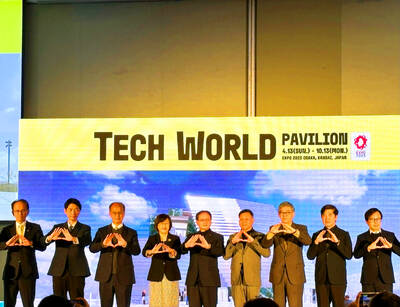
A: The World Expo 2025 is about to open in Osaka. Is Taiwan going to participate in the event too? B: Sure, the Taiwan External Trade Development Council (TAITRA) will launch a Taiwan pavilion named “Tech World.” A: That sounds cool, and it can showcase our national strength in technology. B: The theme is “Connecting the world to create better future lives together.” The pavilion aims to attract over one million visitors. A: I hope humans can really create better future lives through this year’s fair. A: 2025年世博會即將開幕,這次台灣也會參加嗎? B: 當然啦,外貿協會的台灣館將以「Tech World」名義參展! A: 聽起來蠻酷的,應該是想強調台灣的科技實力。 B: 策展主題則是:「連結世界,共創未來美好生活」,希望能吸引到100萬人次參訪。 A: 希望藉由這次世博會,人類真的能共創美好生活。 (By Eddy Chang, Taipei Times/台北時報張迪)
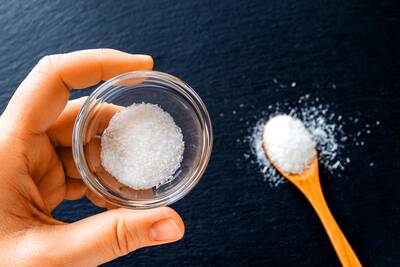
The study had several issues. Small sample sizes made it hard to draw __7__ conclusions. Additionally, taking a __8__ like pure MSG on an empty stomach is likely to make a person ill in any case. Choosing individuals who already had a history of the symptoms could have created a bias because they were likely to __9__ the reactions again. When real scientific research on the effects of MSG was eventually done, many of the myths surrounding it were proven __10__. The U.S. Food and Drug Administration and other global organizations have found MSG safe to eat. Today, MSG